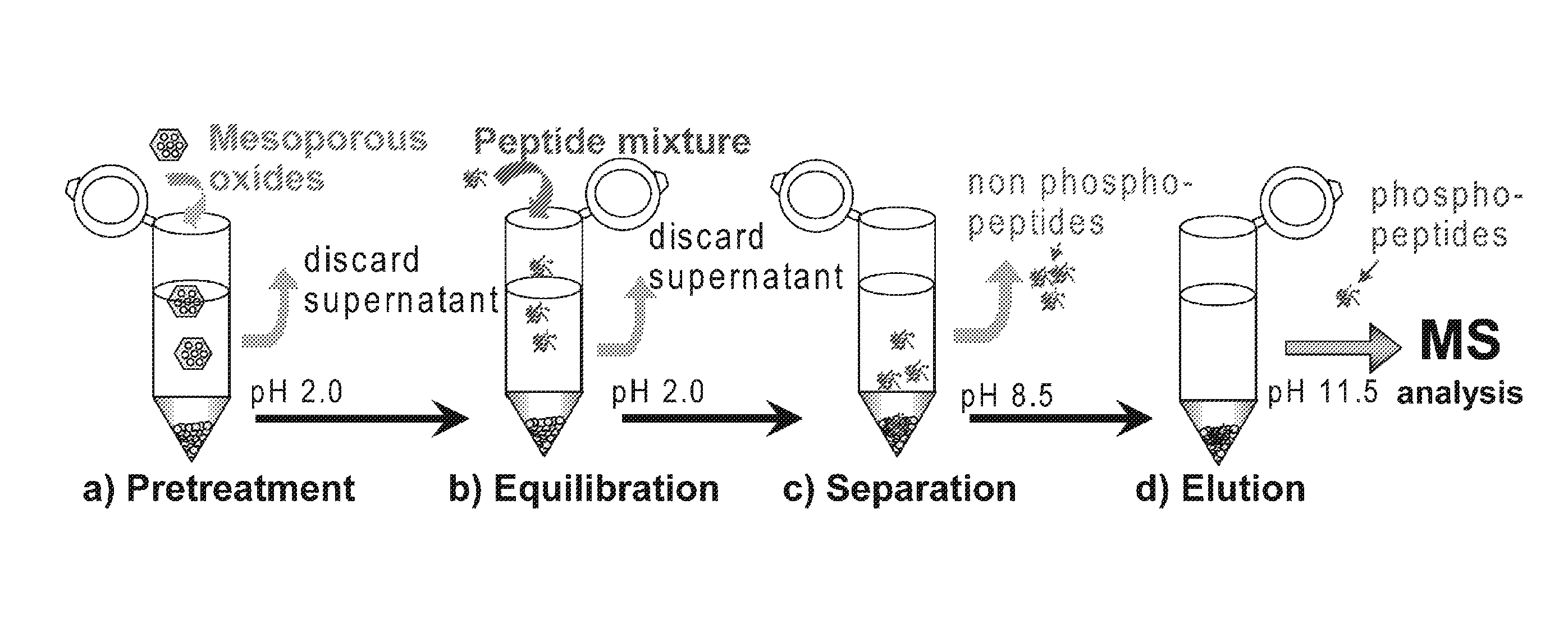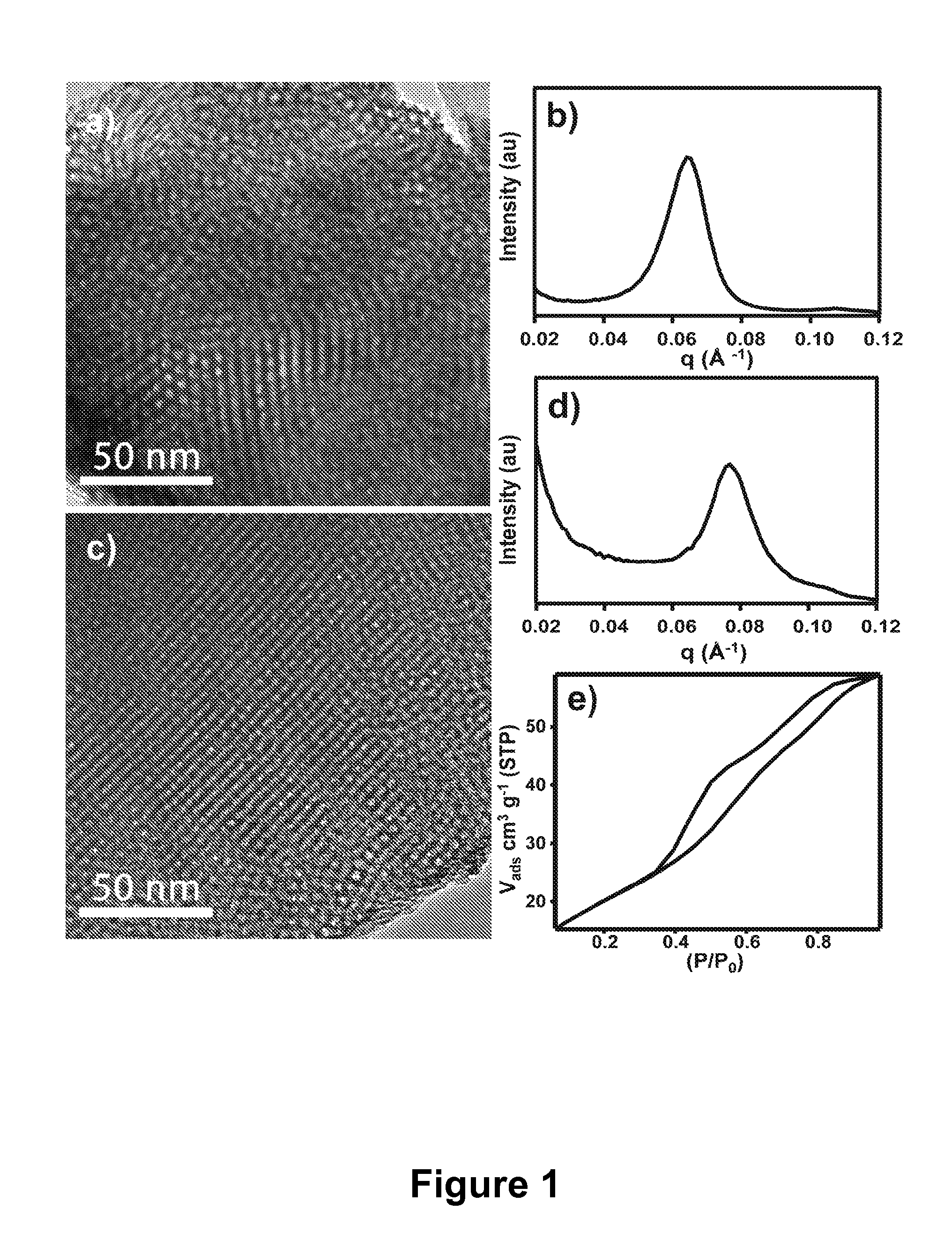Mesoporous metal oxide materials for phosphoproteomics
a metal oxide and phosphoproteomics technology, applied in the field of phosphoproteomics, can solve the problems of complex proteomics, significant challenges in the implementation of these techniques, and achieve the effect of high specificity and higher loading capacity
- Summary
- Abstract
- Description
- Claims
- Application Information
AI Technical Summary
Benefits of technology
Problems solved by technology
Method used
Image
Examples
example 1
Mesoporous Metal Oxide Nanomaterials Effectively Enrich Phosphopeptides for Mass Spectrometry-based Phosphoproteomics
[0064]Reversible protein phosphorylation is a ubiquitous post-translational modification that plays a vital role in the control of many biological processes such as cellular growth, division, and signaling.[1] Aberrant phosphorylation is known to be one of the underlying mechanisms for many human diseases, most notably cancer[1a,c]
[0065]Mass spectrometry (MS) has emerged as the most important and powerful tool for the analysis of protein phosphorylation due to its sensitivity, speed, simplicity, separation, and specificity.[2] While MS techniques have been successfully applied to determine the phosphorylation state of single proteins / peptides, MS analysis of phosphorylation on a proteome-wide scale still poses substantial challenges due to the low abundance of phosphoproteins and substoichiometric phosphorylation.[3] Therefore, isolation and enrichment of the phosphop...
example 2
Mesoporous Metal Oxide Packed Tip for Phospho-Enrichment
[0121]This Example provides a description pertaining to the development of a phosphoenrichment tool provided in a packed tip format using a gel-loading tip packed with a mesoporous metal oxide enrichment material. FIG. 13 provides a schematic drawing of the mesoporous metal oxide packed tip for phospho-enrichment. Specifically, FIG. 13A illustrates an in-house developed packet-tip phosphoenrichment product (100) with a gel-loading tip (110) packed with mesoporous metal oxides (120), such as mesoporous ZrO2 and / or HfO2 beads. FIG. 13B illustrates a packet-tip phosphoenrichment product (200) comprising a packed gel tip (210) packed with mesoporous metal oxides (215) such as mesoporous ZrO2 and / or HfO2 beads, wherein the tip is coupled with an offline syringe pump (220) to provide a flow of sample through the packed gel tip (210). The packed tip is easily coupled with an offline syringe pump for enrichment applications, which can ...
PUM
| Property | Measurement | Unit |
|---|---|---|
| ionic strength | aaaaa | aaaaa |
| thickness | aaaaa | aaaaa |
| width | aaaaa | aaaaa |
Abstract
Description
Claims
Application Information
 Login to View More
Login to View More - R&D
- Intellectual Property
- Life Sciences
- Materials
- Tech Scout
- Unparalleled Data Quality
- Higher Quality Content
- 60% Fewer Hallucinations
Browse by: Latest US Patents, China's latest patents, Technical Efficacy Thesaurus, Application Domain, Technology Topic, Popular Technical Reports.
© 2025 PatSnap. All rights reserved.Legal|Privacy policy|Modern Slavery Act Transparency Statement|Sitemap|About US| Contact US: help@patsnap.com



